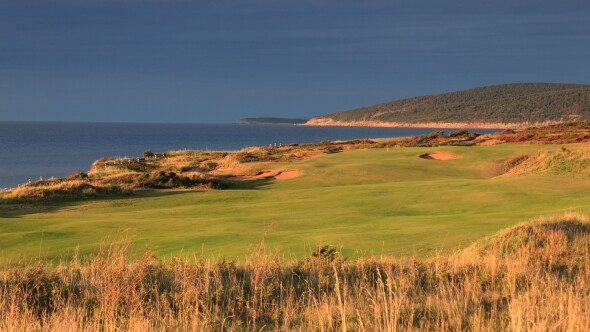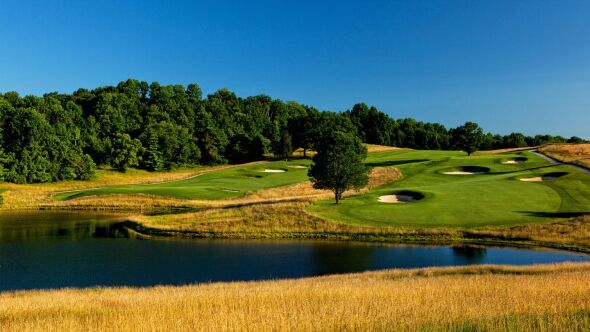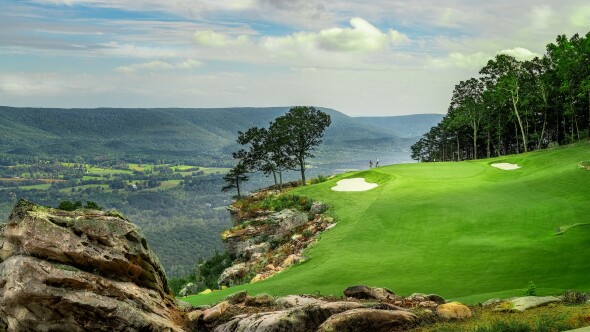Bellerive Country Club, home to the 100th PGA Championship, is one of those curious tournament venues whose chief virtue appears to be that officials keep finding ways to make it better. Which is to say it was a lot worse and certainly not mature enough back in 1965 when the five-year-old layout designed by Robert Trent Jones Sr. hosted the U.S. Open.
Back then, as confirmed by video highlights of the event, it was dotted with spindly saplings, its bunkers plopped down atop ungainly mounding that didn’t fit the surrounds - whether flanking fairways or protecting greens. Its only notable feature was its length; at 7,191 yards, it was the longest course ever to host the national championship.
These days, Bellerive, 18 miles west of St. Louis city center, conveys a stately, elegant parkland sensibility. Those trees have grown in to form impressive woods. The greens have all been rebuilt to look like classic fill pads with bunkers set at their base. And all of the sandy hazards have been reshaped into sculpted cavities that stand out dramatically.
Bellerive is a distinct type of period-piece golf design – a lush, flawlessly manicured suburban parkland country club that serves an active golf membership while simultaneously challenging the world’s finest players.
Credit for that goes to recurring work by architect Rees Jones as well as meticulous attention by the green staff to quality turfgrass cultivation. Head greenkeeper Carlos Arraya recently completed major work breaking up an inorganic black layer that threatened two years ago to shut down the greens completely.
This is a region among the country’s harshest in terms of weather extremes: sultry summers and frigid winters. Summertime sees no wind, except for the occasional rain storm. Play will proceed under neatly dead-calm skies.
The platform structure of these bentgrass putting surfaces entails very little interior surface contour but sharp falloffs to each side. Wayward iron-shot approaches will leave stiff up-and-over recoveries. The game here is entirely aerial. That style is replicated in the fairway bunkering style, which in the Jones-family tradition relies upon a model of bumper pool, with the hazards arrayed laterally amidst rough and converging slightly to create a pinch point at the landing zone. The desired shot is down the middle, where the zoysia grass provides a perfect lie. Miss it and the lies in the tall fescue rough will be very difficult to handle.
The 218-acre site has 190 feet of elevation change, most of it on the back nine, where an elevated ridge down the stretch adds considerable drama to the terrain. In fact, it’s precisely when the ground gets moving that this golf course gets intriguing. The opening holes are relatively low-lying. But we get a premonition of things to come at the par-4 ninth hole, 433-yards uphill on a reverse camber twist that creates a deflective fairway pitched to the right– by far the toughest to hit on the golf course.
The par-4 11th hole, 355 yards on the scorecard, will serve as the now-obligatory drivable hole when the tees are moved up twice – as promised – to the 325-yard range. A pond protects the last 60 yards on the right and laps at the side of the green. To promote aggressive play, Kerry Haigh, in his role as PGA of America chief championship office, convinced Rees Jones and the club to remove a pot bunker that cut into the front left of the hole to provide room for a bold shot and a consequent reward for the risk.
By far the strongest, most distinctive holes are those on the ridgeline – holes 13 through 16. It’s not just the elevation; it’s also the drama of this stretch that overlooks the rest of the course – or would if the club undertook even more tree removal than it already has.

Alternate tees at the 597-yard, par-5 17th hole provide different angles and distances to and along the main hazard here: a creek lurking tight down the right side of the fairway, from the tee shot down to the lay-up second. It’s hard to keep out of mind. The hole will succeed in its strategic intent if the number of eagles recorded here roughly matches the number of double bogeys.
Bellerive is a distinct type of period-piece golf design – a lush, flawlessly manicured suburban parkland country club that serves an active golf membership while simultaneously challenging the world’s finest players. It’s the kind of course a modern Tour player will find comfortable to the eye.












Looking forward to the event this week!
It appears that most of the holes bend to the left. Is that so and do you think right handed player who favor a draw will be most comfortable?